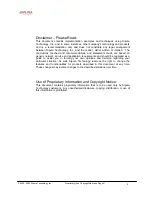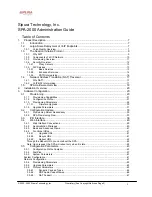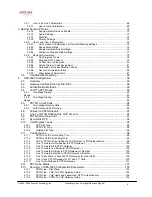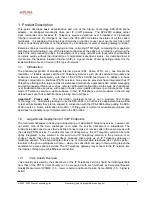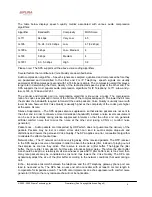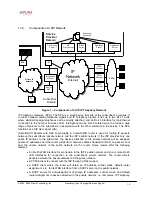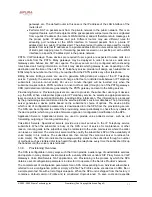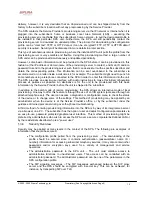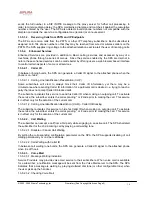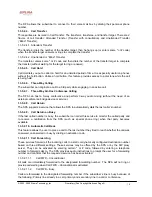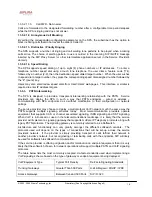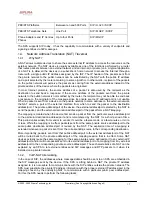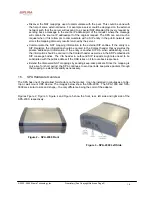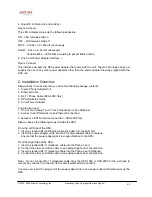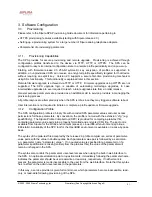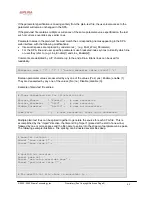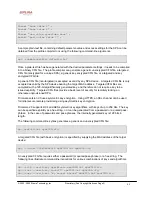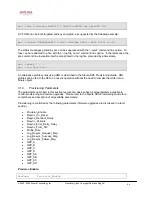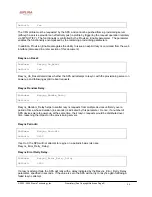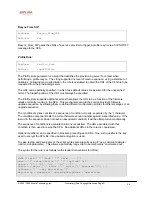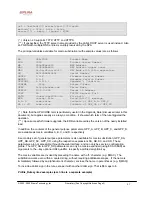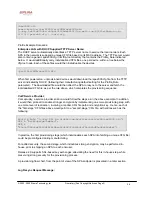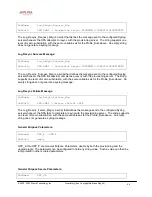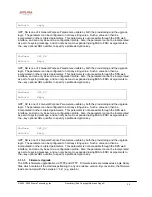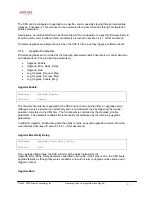
© 2003 - 2005 Sipura Technology, Inc
Proprietary (See Copyright Notice on Page 2)
16
1.3.5.2.11.3. Call
FWD - No Answer
Calls are forwarded to the designated forwarding number after a configurable time period elapses
while the SPA is ringing and does not answer.
1.3.5.2.12. Anonymous Call Blocking
By setting the corresponding configuration parameter on the SPA, the subscriber has the option to
block incoming calls that do not reveal the caller’s Caller ID.
1.3.5.2.13. Distinctive / Priority Ringing
The SPA supports a number of ringing and call waiting tone patterns to be played when incoming
calls arrive. The choice of alerting pattern to use is carried in the incoming SIP INVITE message
inserted by the SIP Proxy Server (or other intermediate application server in the Service Provider’s
domain).
1.3.5.2.14. Speed Dialing
The SPA supports speed dialing of up to eight (8) phone numbers or IP addresses. To enter a
telephone number speed dial using a touch tone telephone, the user dials a feature code (*74),
followed by a number (2-9), then the destination speed dialed target number. When the user wishes
to speed dial a target number, they press the corresponding speed dial assigned number followed by
the “#” (pound) key.
Users may also enter/review speed dials from User1/User2 web-pages. This interface or similar is
required to enter IP address targets.
1.3.5.3. PSTN
Interworking
The SPA is designed to provide a transparent interworking relationship with the PSTN. Service
providers can deploy the SPA in such a way that PSTN endpoints – wired or wireless –
communicating with SPA endpoints do so without modification to their configuration or network
settings.
The service provider may choose to deploy a multi-protocol VoIP network, much the same way the
PSTN supports multiple signaling schemes today. Most telecommunication providers operate
equipment that supports CAS or channel associated signaling, ISDN signaling and SS7 signaling.
When VoIP is introduced or used in the telecommunications landscape, it is likely that the service
provider will implement a signaling gateway that supports multiple IP Telephony protocols along with
legacy PSTN protocols. The signaling gateway is commonly referred to as a Softswitch.
Architecture and functionality can vary greatly amongst the different softswitch vendors. The
protocols used will depend on the types of connections that will be set-up across the service
provider’s network. If the provider is simply providing transport of calls to/from their network to
another provider’s network, but not originating or terminating calls with the endpoints, SIP will likely
be used for softswitch to softswitch communication.
If the service provider is offering origination and/or termination on endpoint equipment then it is very
likely that the softswitch chosen for network operations will support multiple PSTN and VoIP signaling
protocols.
The table below lists the most commonly accepted, de-facto standards used when implementing a
VoIP signaling scheme based on the type of gateway or endpoint equipment being deployed:
VoIP Equipment Type
Typical Port Density
De-Facto Signaling Standards
Trunking Gateways
Greater Than 500 Ports
H.248-Megaco / MGCP / IPDC
Access Gateways
Between five and 500 Ports
SIP / H.323

